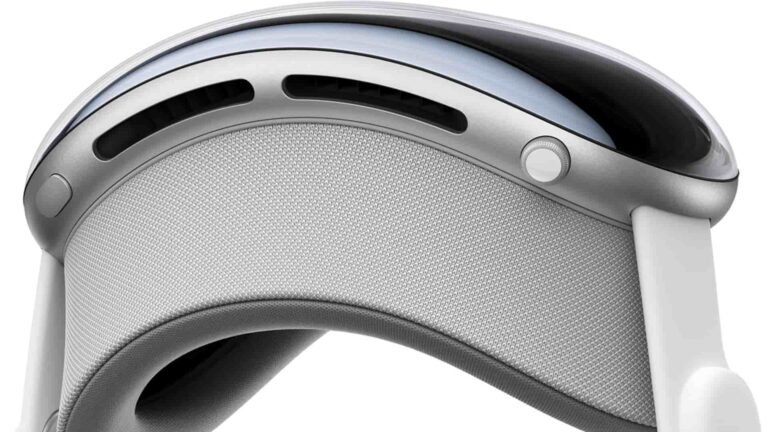
Since Apple launched Vision Pro, the interweb has been clogged with wannabe punditry. Legions of noobs are suddenly spatial computing experts. As we said after the unveiling, beware of analysis from anyone who hasn’t touched the device, or isn’t versed in AR.
The power and perspective of actually wearing it can be seen in Jim Cramer’s metamorphosis from curmudgeon to fanboy. This process will unfold for countless haters as Vision Pro (we’ll call it AVP henceforth) becomes available for developers and the general public to try.
We haven’t worn the device, so we’ll refrain from hardware reviews. But we are versed in AR dynamics: This publication and its research arm ARtillery Intelligence have closely examined AR and the spatial spectrum since 2016. And we’ve been writing about Apple since 2001.
So on those levels, what is Vision Pro? Who’s it meant for? And how does it fit into Apple’s future-proofing plan? The TLDR version is that Apple, true to form, is playing a long game. Don’t dwell on AVP’s specs or price tag, but its alignment with a signature Apple product lifecycle.
https://twitter.com/LukeHurd/status/1665652620399194118?s=20
Apple’s Way
Starting with the price tag, it’s been AVP’s biggest sticking point. Back to those breathless editorials from AR noobs, no one cares about proclamations that you won’t be buying it. This device isn’t for you. It’s to plant a flag for a first-generation device, and to do so Apple’s way.
This involves demonstrating what’s possible at any cost, then iterating through several generations to lower cost and boost capability. In that process, the device will carry Apple’s signature exclusivity, with scarcity dictated by a demand-constraining price… and some supply bottlenecks.
This engineered status will drive AVP’s elite vibes for several generations to come. It’s similar to Tesla’s early strategy: It was cost-prohibitive at first, endowing a certain elite status. Then when the price dropped and supply grew, all that built-up demand fueled years of sales.
A better example is Apple itself. Early desktop computers were exorbitantly priced. According to AR engineering and optics maven Karl Guttag, an Apple 2 with 4k of RAM was initially US$1,298. That’s the equivalent of $6,268 in today’s dollars – almost double AVP’s launch price.
Further supporting the theory behind the elite/exclusive vibes, it was revealed last week that AVP’s sales process will carry the same torch. It will be a “velvet rope” experience, requiring an appointment – sort of like the way you buy high-end jewelry or, again, a new Tesla.
Game Plan
Speaking of jewelry, AVP fits into another key factor: wearables. Stepping back, Apple’s game plan these days is all about revenue diversification. As smartphones reach maturity and revenue deceleration, it has to find other large-scale ways to maintain revenue growth.
This is the raison d’être for wearables and services. And AVP feeds into both. For wearables, revenue growth each quarter mostly offsets a declining iPhone growth rate. Consequently, wearables hold a great deal of importance, investment, and political capital in Cupertino.
AVP fits right into wearables in that it could sync with sensory experiences in Watch and AirPods. Visuals join spatial audio and biometrics (think: immersive fitness). And Apple’s signature ARPU-boosting ecosystem approach incentivizes you to buy several devices for continuity.
As for services, including AppleTV+, AVP is positioned as an elite and immersive consumption experience. This was one of the biggest points of emphasis in the AVP unveiling, including massive virtual screens (Apple finally developed a TV), and serene viewing environments.
Moreover, Apple will cultivate a use case around sports, including courtside seats for 180-degree immersive viewing. These dots can be connected if you look at its acquisition of NextVR, as well as its MLS streaming rights, and discussions with the NBA revealed this week.
Sights & Sounds
Sticking with sports, imagine watching hockey in a virtual front-row seat, with the visceral sights and sounds of players colliding into the boards in front of you. You’ll be able to pick from several vantage points. For superfans, a $9 ticket (or season pass bundle), could be a no-brainer.
The beauty is that the $9 virtual hockey ticket scales eliminates supply constraints in any given sport, including proximity and venue size. This is the type of scalable revenue stream Apple needs to counterbalance iPhone revenue deceleration. It needs to shoot for massive targets.
In that sense, we’ll see AVP accelerate or initiate other major industry disruptions. Beyond entertainment, that includes existing forays into healthcare and fitness. And several others will follow – some already mapped out in Apple’s master plan, and others to be discovered.
That plus hardware and other cascading revenue streams is where Apple is going. AVP won’t replace the iPhone nor be as ubiquitous, but it will be a key part of the puzzle for Apple’s signature multi-device ecosystem approach. And like Mac and iPhone, it will take several years.
Or as Road to VR’s Ben Lang wrote:
“With this first-gen headset, Apple has planted a flag in the ground with Vision Pro, saying, ‘we want the MR experience to be at least this good, regardless of what it costs’. From here the goal is clear: make it smaller, better, and cheaper. And if they keep doing that, future iterations of AVP will become increasingly valuable and increasingly accessible to more and more people. If this is the bar they’re setting for themselves (and by extension, the rest of the XR industry), then the future is looking very bright… even if it’s not quite here yet.”

